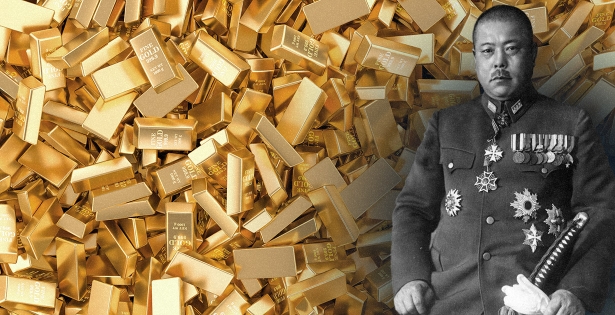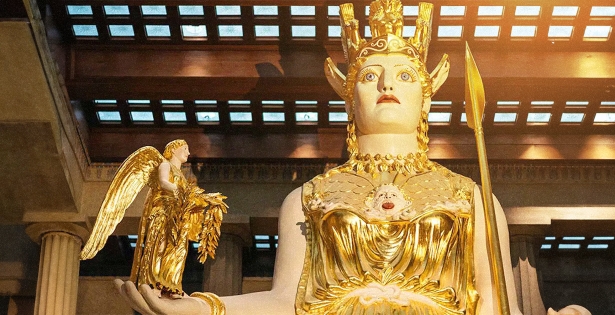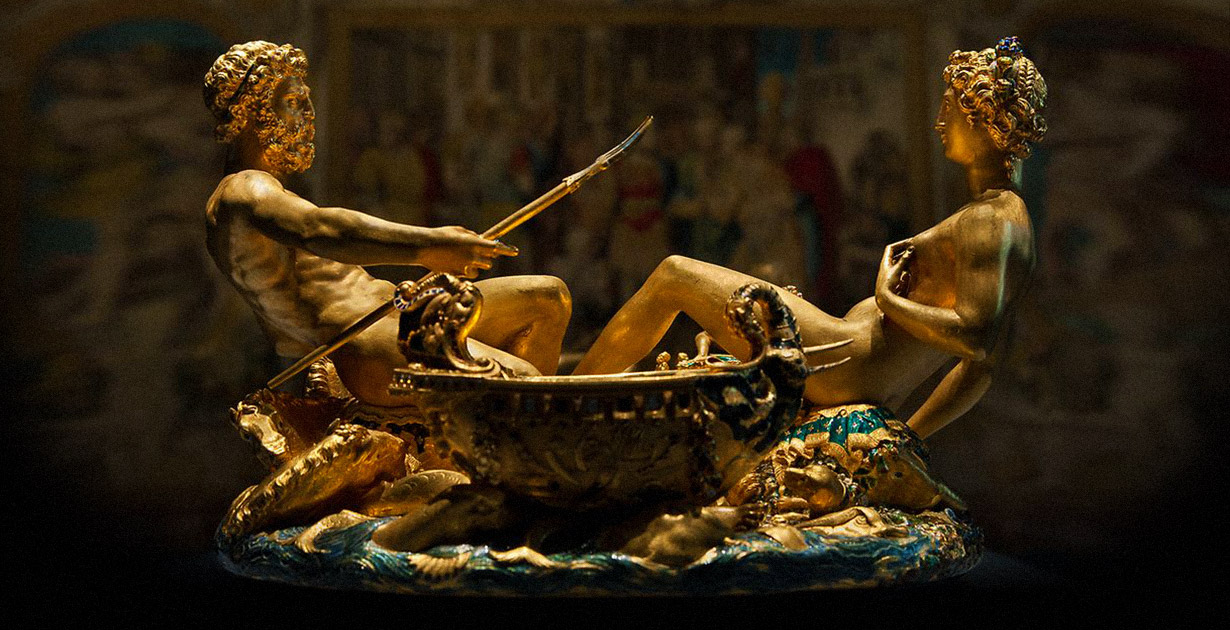
The Saliera: golden salt cellar by Benvenuto Cellini
Average reading time — 3 minutes
King's order
The priceless salt cellar Saliera, created by the greatest Benvenuto Cellini in the 16th century, belonged to King Francis I. His reign in France is considered the heyday of the economy, trade and agriculture. The monarch loved luxury and surrounded himself with talents: he called Leonardo da Vinci, Andrea del Sarto, Rafael and Cellini to the court.

In the photo: portrait of Francis I made by Jean Clouet, 1525, Louvre.
The greatest master
Benvenuto Cellini is an outstanding Florentine sculptor and painter. His life is filled with incredible adventures, dramatic stories and, of course, creativity. Cellini became a casting master and made incredibly complex sculptures for representatives of the high nobility.
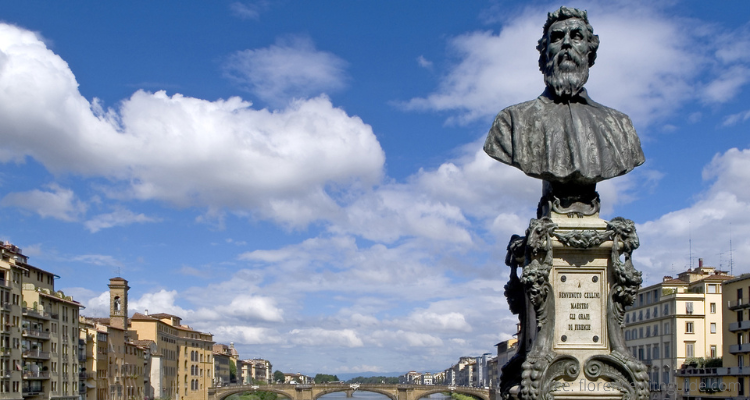
In the photo: Benvenuto Cellini symbolizes the Renaissance in Italy. The bust of the sculptor is installed on the Ponte Vecchio Bridge in Florence.
The sculptor was received with honors at the French royal court, where he worked on priceless masterpieces for three years (1540-1543). One of them is perfectly preserved and is located in the Kunsthistorisches Museum (Museum of Art History) in Vienna: this is the famous salt cellar made for the French monarch.
The golden Saliera
The exquisite creation of the master is considered the culmination of the decorative art of the Mannerism era. The great master Cellini realized the utmost conception and demonstrated the unity of the earth and the sea, in the union of which salt is born.
The symbol of the seas and streams — the ancient Roman god Neptune sits on majestic horses next to the ship. Next to him is the Roman goddess of fertility Ceres on an elephant, to the right of the divine figure is an ancient building. According to the master's idea, it opens and pepper can be poured into it, and the ship is designed for salt.
The salamander at the feet of Ceres became the embodiment of the royal power of Francis I. The figures of deities are washed with the waves of the sea, which emphasizes the deepest connection between earth and water.
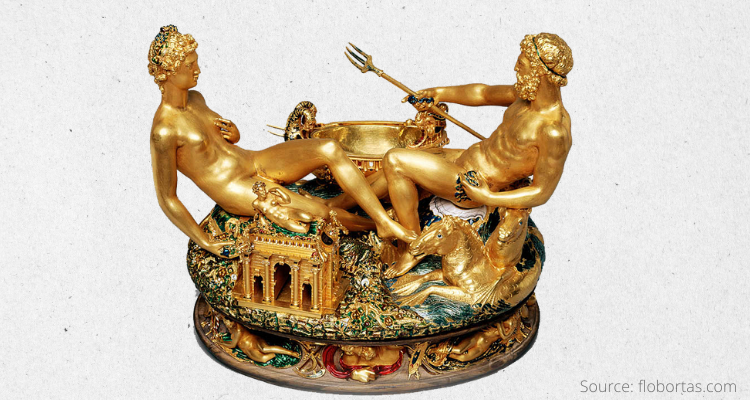
In the photo: The figurine is made of gold and enamel. The height of the figure is 26.3 centimeters, the width of the base of the sculpture is 33.5 centimeters.
At the base of the salt cellar, the master depicted four babies, who in the Renaissance were called putti (Italian putto, Latin putius). They symbolize the four cardinal points and the directions of the winds.
The salt cellar is prudently placed on special small wooden rollers so that it can be easily rotated or moved around the table.
Theft of the century
After the great Cellini carried out the order of the King of France, the salt cellar for some time was owned by Francis I. Subsequently, it passed into the hands of the monarch Charles IX, who, in turn, presented the famous creation of the Italian sculptor to Archduke Ferdinand II of Austria. The Saliera was kept for a long time in the Ambras Castle Museum in Innsbruck, and then “moved” to Vienna.
It was there, in the capital of Austria, that the admirable masterpiece of Cellini was not kept safe. Under strange circumstances, in 2003, the valuable exhibit disappeared from the Museum of Art History.
Whoever finds the treasure was promised a reward of 70,000 euros. This was very modest, since the real cost of the item exceeded 50 million euros. The Saliera was providently insured; there was no way to sell it on the market. Apparently, the robber did not take these circumstances into account, so he put the golden salt cellar in a lead box and buried it in a forest near the Austrian city of Zwettl-Niederoesterreich. There it was found three years later by the Austrian police.
Read also the article:
Golden dishware — luxury and privilege
